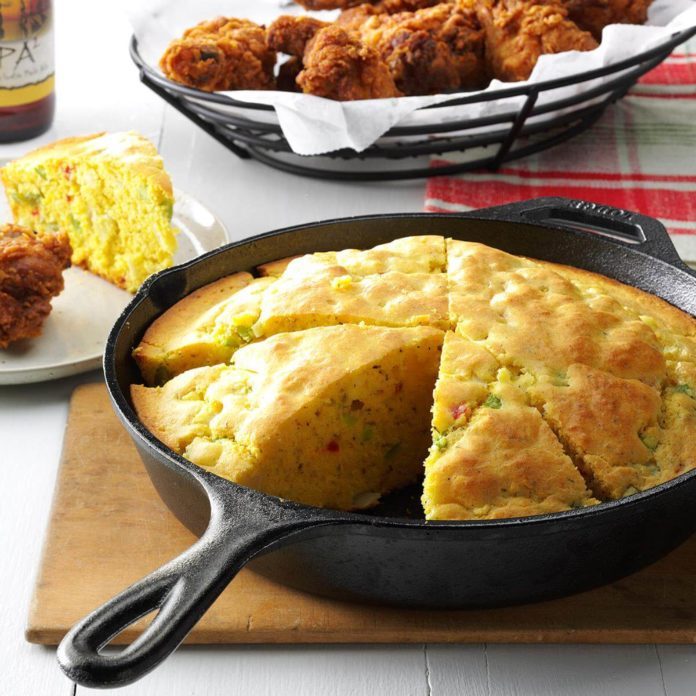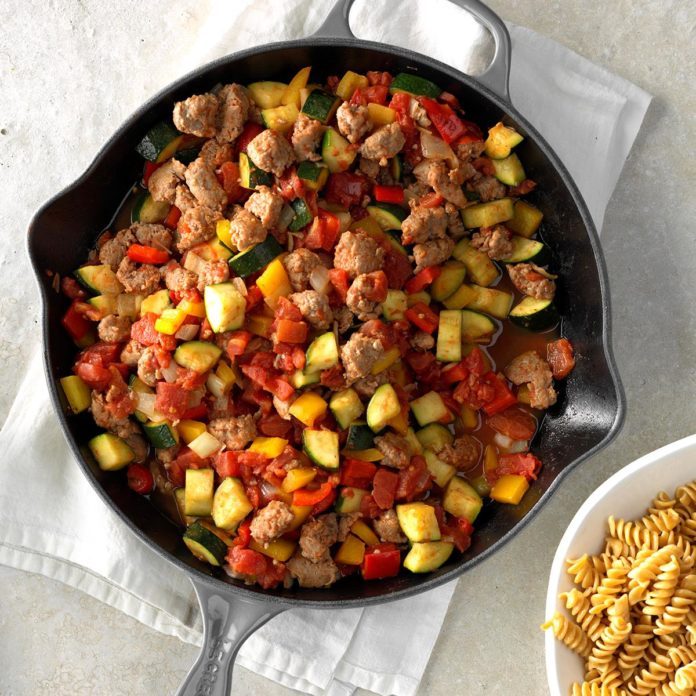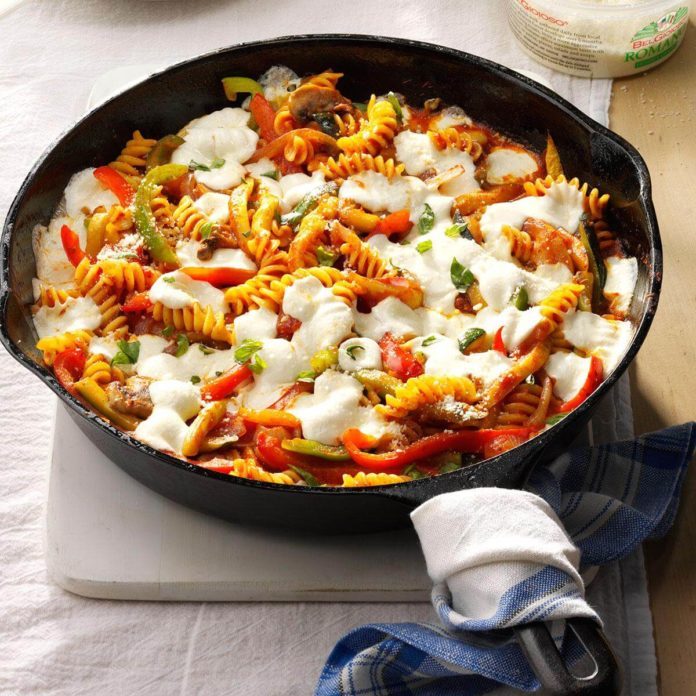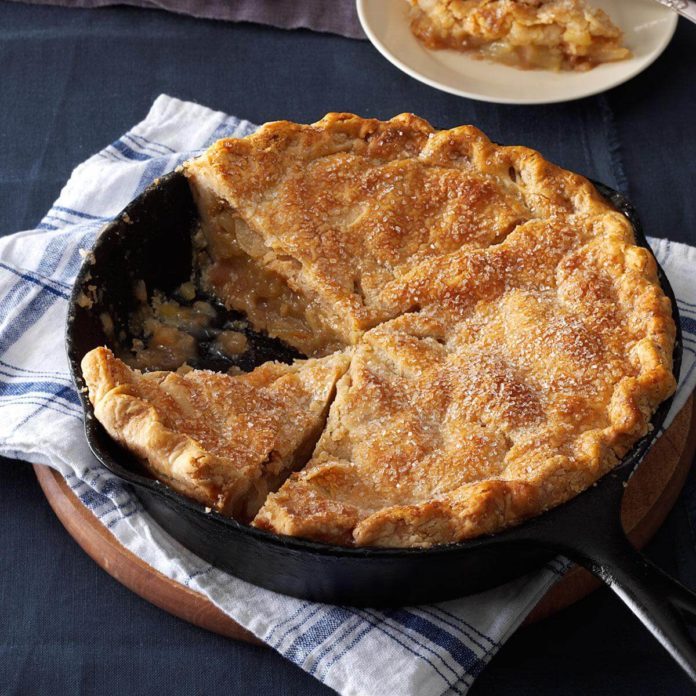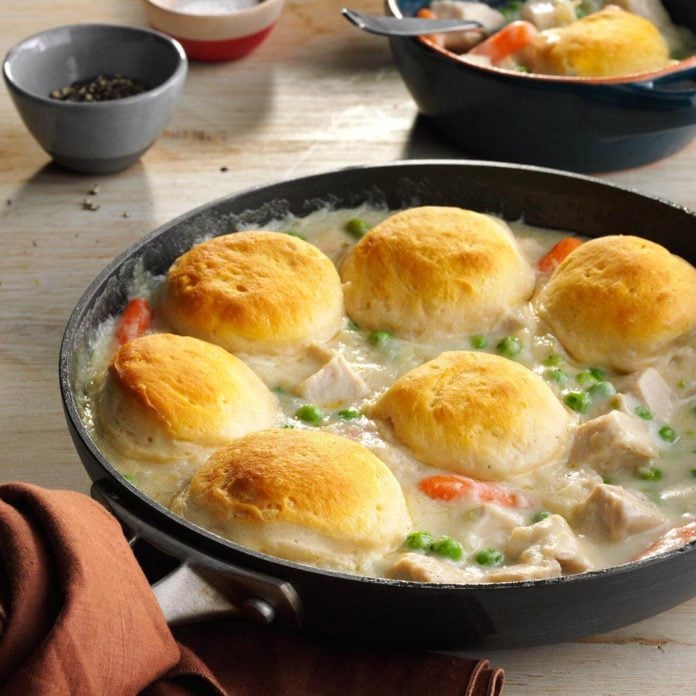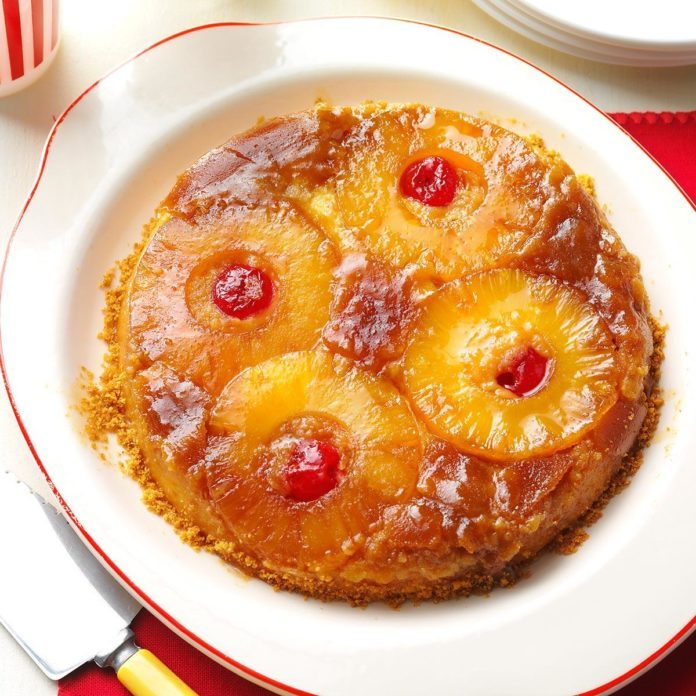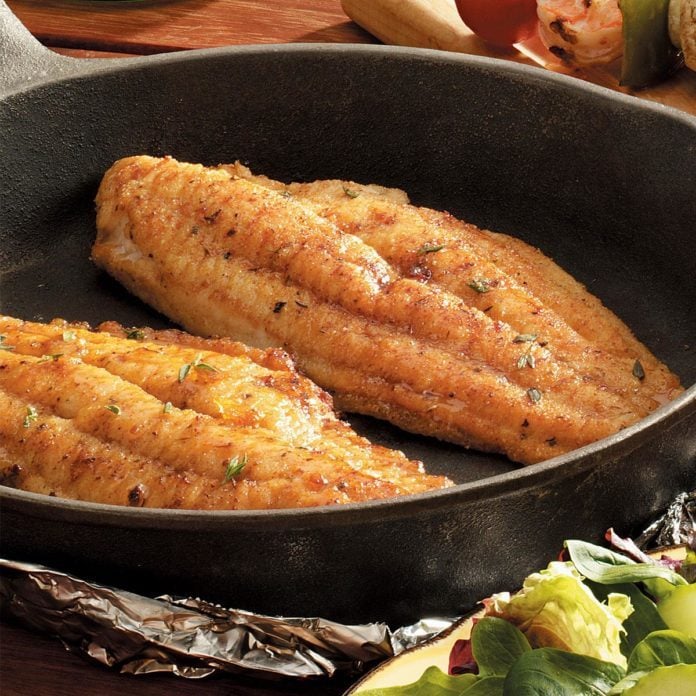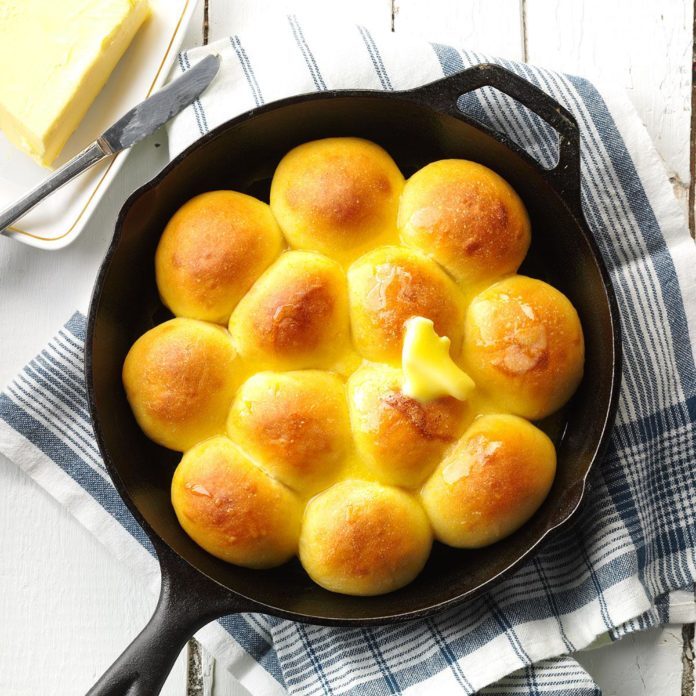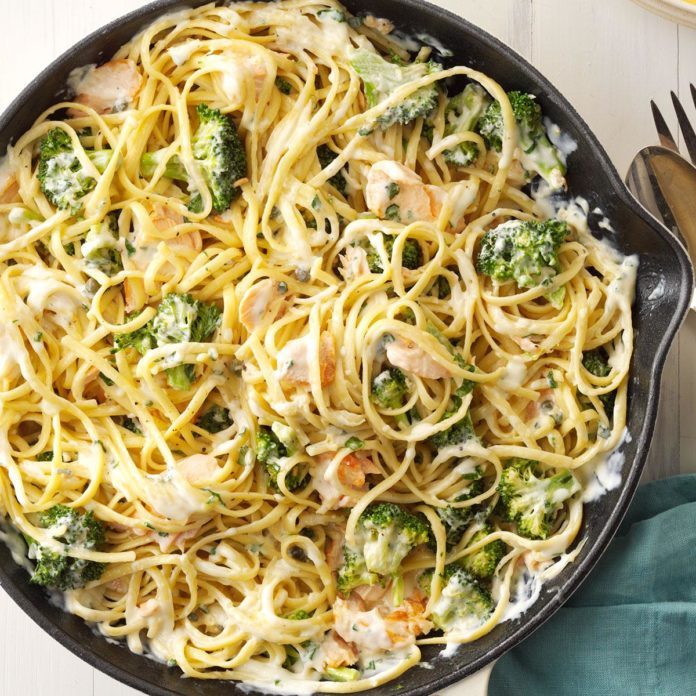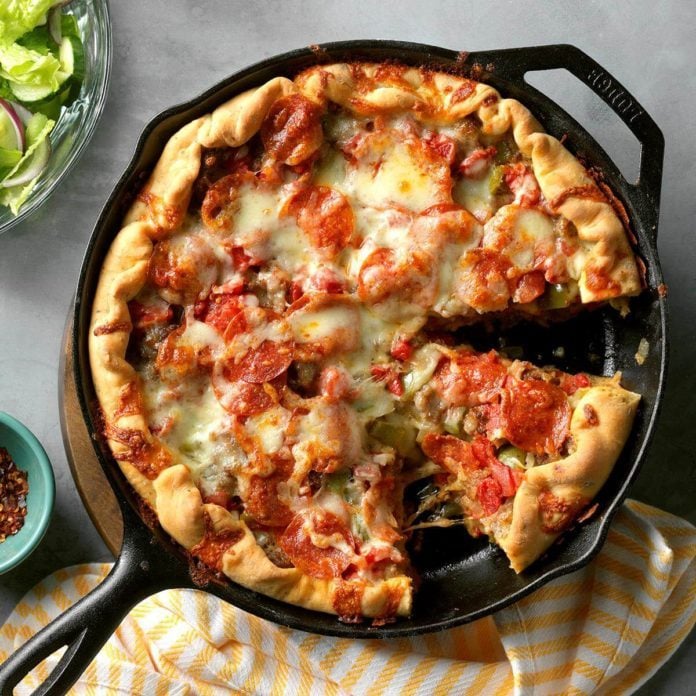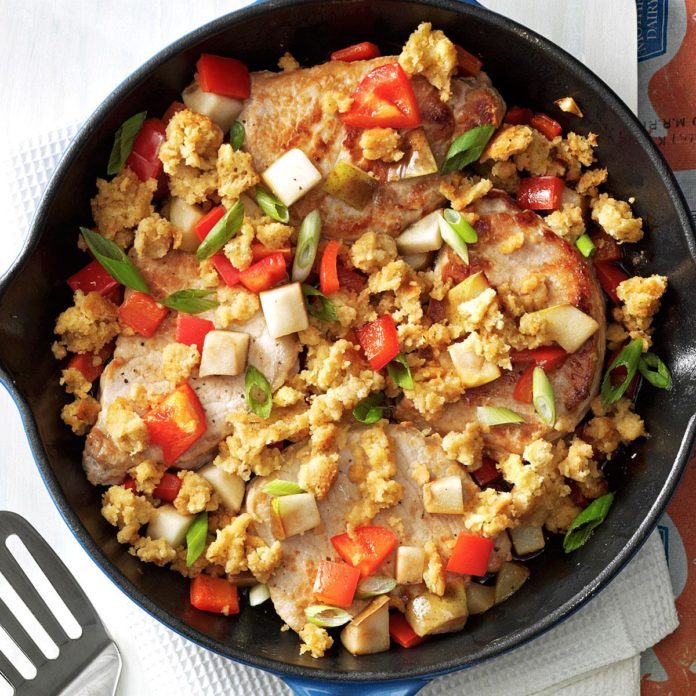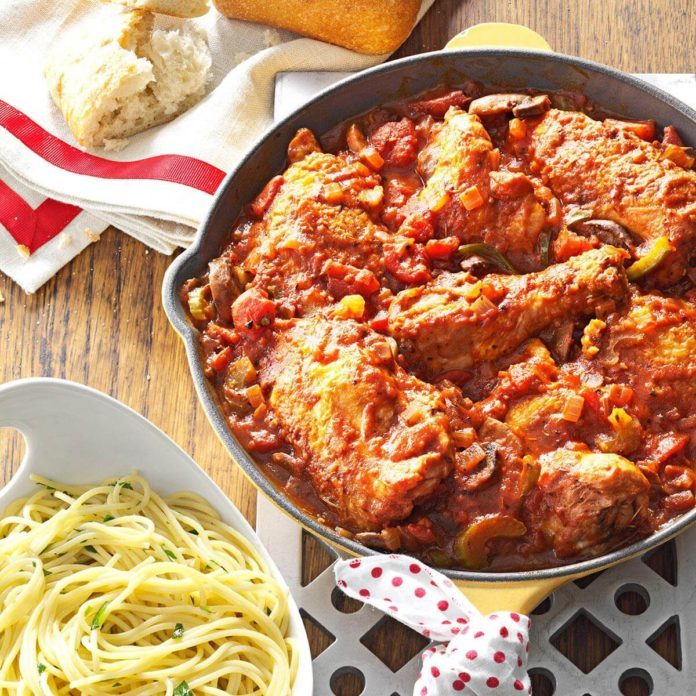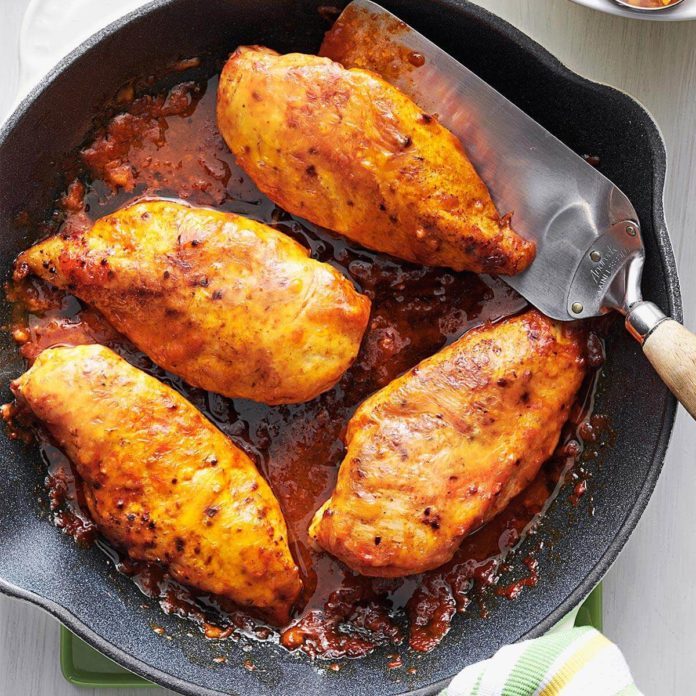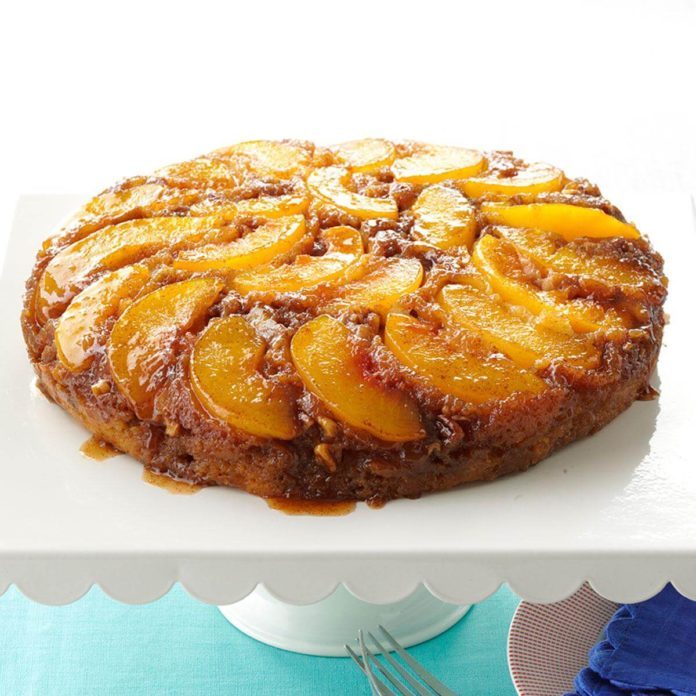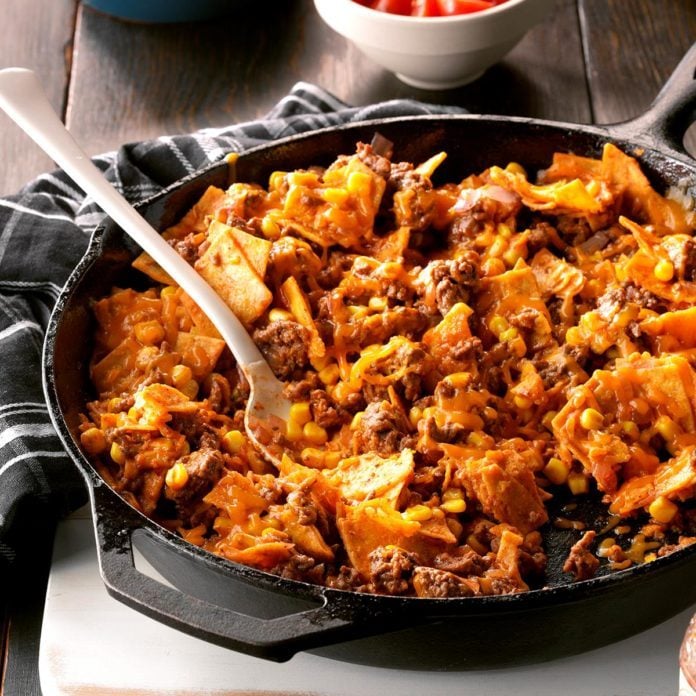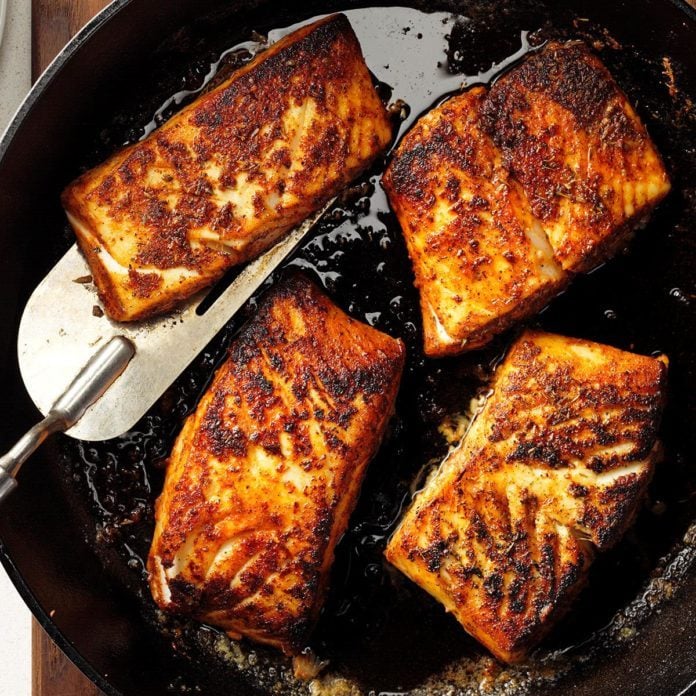I love cast iron. Whether I’m using an enameled Dutch oven for soups or braises, or I reach for my trusty skillet for hashes, baked pastas or desserts, I know it will be delicious every time. It doesn’t hurt that cast iron is pretty easy to clean, too!
If you’ve recently moved into a new home or remodeled your kitchen, you might be wondering how to cook with cast iron on your new stove. There is some debate out there about whether you can use cast iron on electric ranges, so I decided to take a closer look to solve the mystery.
Gas vs. Electric: Is One Better?
Both gas and electric have their pros and cons. For example, gas heats up quickly and gives you a visual indicator of heat, but electric is better at maintaining low heat levels for a steady simmer. In the end, both types of stove get the job done, but you may have to make some tweaks to your cooking style to take advantage of your stove type.
You may be surprised to know that both types of stoves can handle cast iron pots and pans. (Even glass-top stoves!) There are some finer details we should discuss before you get started cooking, though, to make sure you keep your cookware in top form:
Time and temperature
I love my gas range because I’m impatient and gas gives me immediate gratification. As soon as I turn on the flame, it starts heating my pan. On an electric cooktop, there’s a bit of a delay; after you turn the dial, you’ll have to wait a few minutes for the element to reach its full heat potential. That means that it will take longer to pre-heat your cast iron pan, so you’ll want to give yourself some extra time when cooking recipes on an electric cooktop.
Most electric stove owners also know how hot those coils can get when you turn them on high. To avoid creating hot spots and burning your food, we’d recommend lowering the heat when using cast iron on an electric stovetop. I like to start the pan out on high for one minute to kick-start the heating process before reducing the heat to medium. Once the food begins cooking, you can even reduce the heat to low. Cast iron holds temperatures exceptionally well, so there will be plenty of heat for residual cooking.
Here’s the best thing you can do for your cast iron.
Movement
Anyone who’s picked up a cast iron skillet knows how heavy it is. You’re unlikely to pick up the pan and toss vegetables while sautéing, but you might be tempted to shake the pan back and forth like you do with a stainless steel skillet. Avoid this temptation at all costs! Moving the cast iron in this fashion could scratch the grates on your gas range, and it can cause serious damage on an electric stove. Shaking the pan can disturb the coils, unhinging them in some cases or causing the elements to become unbalanced.
This tip is especially important for those of you who have glass-top stoves. Sliding the pan around on the glass can cause stains, nicks, scratches or cracked surfaces. Get into the habit of picking the pan up when you need to move it (and setting it down gently, too).
Cleaning and maintenance
When you’re cooking on gas, you don’t have to worry too much about what’s happening on the bottom of the pan. Since the flames heat the pan directly, the grill grates act as a buffer that keep the pan from touching the range itself. This means any built-on grease or burrs won’t affect the cooking process, and it won’t negatively affect the pan, either.
When it comes to electric ranges, the bottom of your cast iron pan definitely matters. The presence of any oil or residues can permanently stain your electric range. When washing your pans, make sure to wash them inside and out after each use. (Psst: Did you know it’s okay to use soap on a cast iron pan? Just make sure you’re seasoning it after every cleaning).
For those of you who have glass-top stoves, you’ll want to perform one extra step before setting the cast iron on your range. It’s wise to inspect the bottom of the cast iron pan to make sure it’s completely flat. Sometimes, cast iron contains small burrs which can crack your delicate glass flattop. If you find any, file them off with a steel rasp.
Speaking of cleaning and maintenance, don’t throw your pan away if it gets super rusty! There’s an easy way to restore a rusted cast-iron skillet.
Homey Mac & Cheese
German Apple Pancake
Chicken Burrito Skillet
Skillet Herb Bread
Italian Sausage Veggie Skillet
Sweet Potato and Egg Skillet
Spicy Veggie Pasta Bake
Flavorful Chicken Fajitas
Cinnamon-Sugar Apple Pie
Sweet Potato and Ham Hash
Turkey Biscuit Stew
Pineapple Upside-Down Cheesecake
Skillet-Grilled Catfish
Butternut Squash Rolls
Creamy Salmon Linguine
Deep-Dish Sausage Pizza
Deconstructed Pear Pork Chops
Pinwheel Steak Potpie
Chicken Cacciatore
Caramel-Apple Skillet Buckle
Maple Glazed Pork Chops
Southwestern Spaghetti
Beef & Pepper Skillet
Spanish Rice Dinner
Apples 'n' Cream Pancake
Chili Beef Noodle Skillet
Enchilada Chicken
Saucy Beef with Broccoli
Confetti Kielbasa Skillet
Skillet-Roasted Lemon Chicken with Potatoes
Peach Praline Upside-Down Cake
Easy Beef Taco Skillet
Basil-Butter Steaks with Roasted Potatoes
Cheese & Mushroom Skillet Pizza
Fudge Brownie Pie
Blackened Halibut
Milk Cake
Lemon-Pepper Tilapia with Mushrooms
Cran-Apple Cobbler
Gram's Fried Chicken
Blackened Catfish with Mango Avocado Salsa
Banana Skillet Upside-Down Cake
The post How to Cook with Cast Iron on Any Type of Stove appeared first on Taste of Home.
Lindsay D. Mattison



